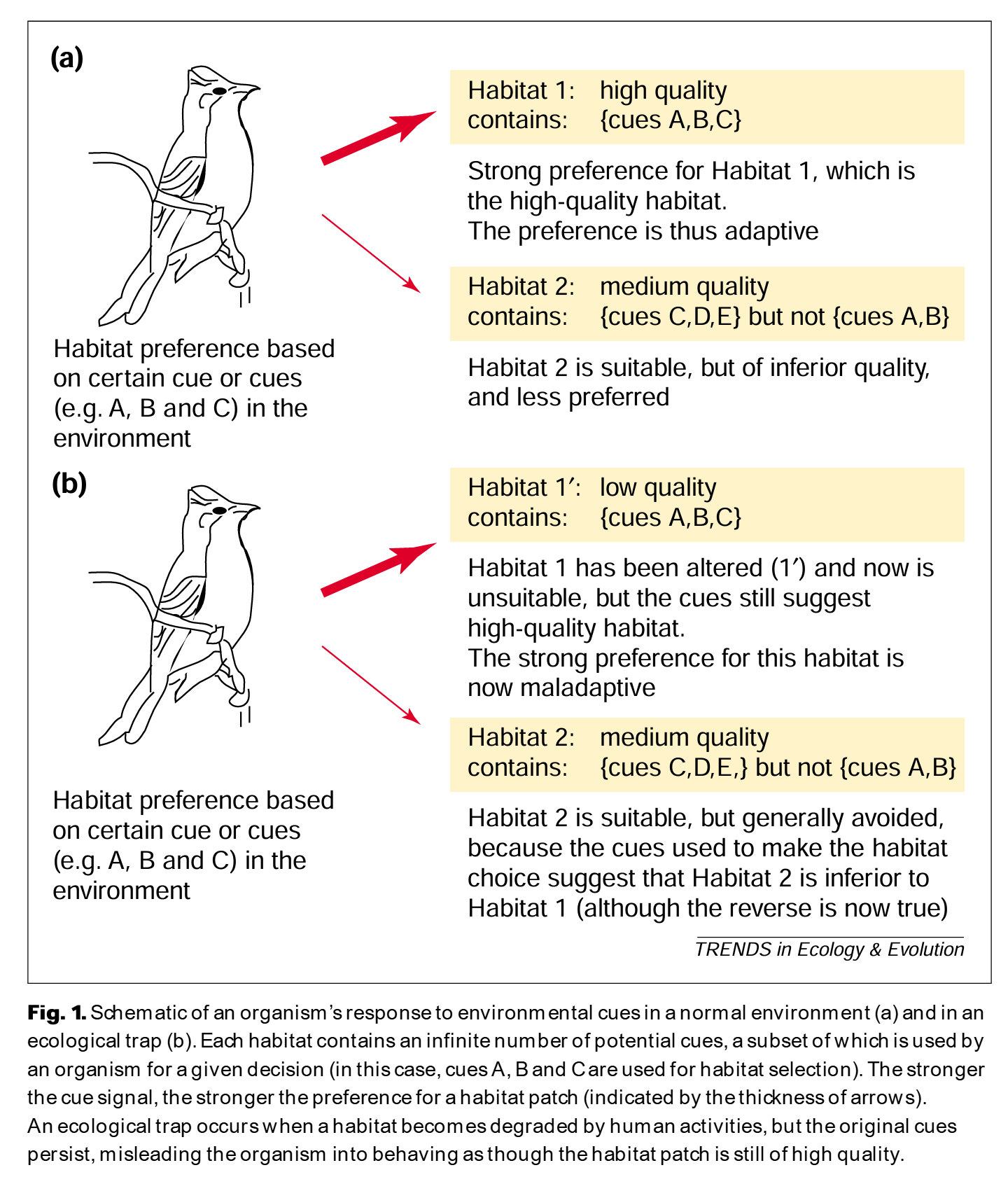Trap
Landscape Trap
Landscape trap is a situation where humans push and then maintain landscapes in damaged structural and functional states. Such traps can emerge from temporal and spatial feedback between human and nonhuman disturbances.
It is a landscape that is trapped in an unfortunate state.
Cf.
- alternative equilibrium/stable states
- ecological trap
Logging of native mountain ash forests in Victoria, Australia is a characteristic example.
Lindenmayer, David B., Richard J. Hobbs, Gene E. Likens, Charles J. Krebs, and Samuel C. Banks. ‘Newly Discovered Landscape Traps Produce Regime Shifts in Wet Forests’. Proceedings of the National Academy of Sciences 108, no. 38 (2011): 15887–91. https://doi.org/10/fr5bnc.
Ecological Trap
An ecological trap is a situation where habitats that lead to low fitness are more attractive to organisms than betters habitats. The opposite of this is when a high-quality habitat appears to an organism to be less attractive, also called "perceptual trap".
Ecological traps are a frequent result of habitat modification by humans.

"Ecological traps occur when organisms make poor habitat choices based on cues that correlated formerly with habitat quality.Ecological traps are part of a broader phenomenon,evolutionary traps,involving a dissociation between cues that organisms use to make any behavioral or life-history decision and outcomes normally associated with that decision."
Schlaepfer, Martin A., Michael C. Runge, and Paul W. Sherman. “Ecological and Evolutionary Traps.” Trends in Ecology & Evolution 17, no. 10 (2002): 474–80. https://doi.org/10/d4nbgd.
Cf.
- source-sink dynamics
- evolutionary mismatch
- perceptual trap (misleading because perception is a component in other forms of trapping, this is relevant as an example of subjectivity/umwelten and their roles)
- undervalued resources
Light pollution is a characteristic example.
It is likely that there should be natural selection against ecological traps but not necessarily against perceptual traps.
An early article introducing this concept is:
Van Horne, B. ‘Density as a Misleading Indicator of Habitat Quality’. The Journal of Wildlife Management 47, no. 4 (1983): 893–901. https://doi.org/10/b9xhbv.
Patten, Michael A., and Jeffrey F. Kelly. ‘Habitat Selection and the Perceptual Trap’. Ecological Applications 20, no. 8 (2010): 2148–56. https://doi.org/10/fhqw2f.